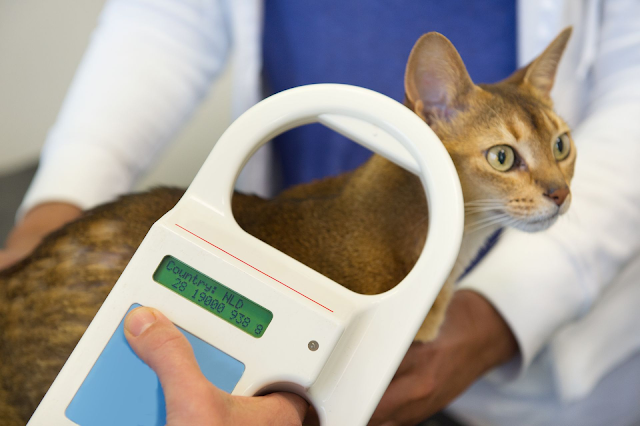Since 2016, all dogs have had to be microchipped, and around nine million currently have a chip.
However, it’s estimated that over a quarter of pet cats in the UK aren’t microchipped, as it is not a legal requirement to do so. Leading animal charities have campaigned for many years for this to change and to make the microchipping of cats a legal requirement of the owner … and it looks like things are about to change at last.
From 2022, the UK government is set to introduce new rules dictating that all pet cats must be microchipped by the time they are 20 weeks old (around five months). Owners will face a fine of up to £500 if they are found not to have microchipped their cat, after being given 21 days to have one implanted.
The benefits of microchipping are many, including making it easier to identify cats who are lost or stolen, enabling them to be reunited with their owner. Currently, eight out of 10 cats coming into Cats Protection centres are not microchipped.
It’s important that microchip details are kept up to date, so if an owner moves house, for example, they should update their address on the central database.
How easy is it for a pet to be microchipped?
Usually, it is very easy. The microchip is a tiny device, about the size of a grain of rice, that is implanted just under the skin between the shoulder blades via a quick procedure that is pain-free for the animal. The chip can be scanned by a vet or animal care professional, which will bring up the owner’s details from a database, enabling him or her to be contacted to arrange return or collection.
Vets can offer advice and appointments for microchipping, which is not expensive, usually around £20, and some animal charities may offer this at reduced rates.
For just a few minutes of your time, chipping can help to alleviate the stress and worry when a cat goes missing. Without a chip, they may be handed into a rescue centre, and could be re-homed to a new owner, as there is no way of tracing their original owner. A chip also enables an injured cat to be reunited with their original owner, or, sadly, if they are killed, at least an owner knows what has happened.
You can read the government’s press release about cat microchipping, issued on 4 December 2021
here.
Below, a cat is scanned for a microchip

